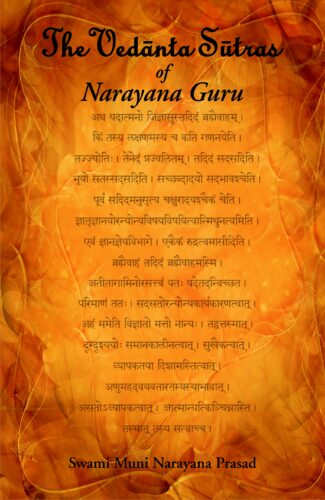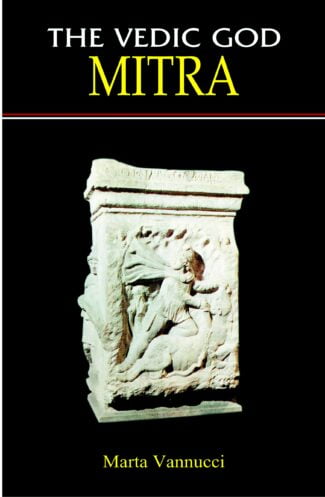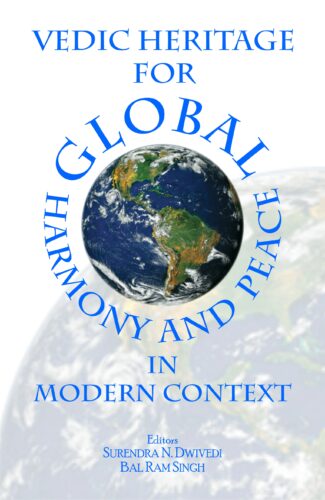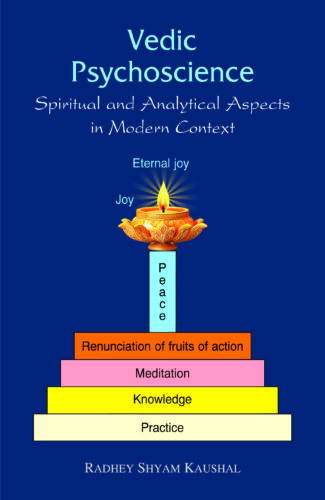Showing 1091–1100 of 1176 results

The Vedanta Sutras of philosopher-poet Narayana Guru has 24 beautifully-fluent sutras revealing the essential message of the Vedanta. The highly-perceptive commentary by Swami Narayana Prasad elucidates the gurus interpretation of the Vedantic concept.
Indias wisdom, one may say, attained its maturity in the Vedanta the end or culmination of veda (knowledge). Vedanta may be seen as the finest fruit on the tree of Indias wisdom, for it brings the seeker that ultimate knowledge that ushers in the gift of self-fulfilment (ananda). Over the centuries, brilliant saint-scholars like Shankara, Ramanuja, Madhva have interpreted the Vedanta in different ways. The philosopher-poet Narayana Guru belongs to this class of noted exponents of the Vedanta. And his Vedanta Sutras is a masterpiece in his attempt to restate the original Upanishadic teaching of non-dual Reality his most succinct expression of that message. This book presents these sutras along with a highly-perceptive commentary that elucidates the Gurus interpretation of the Vedantic concept in a brilliant style. Narayana Gurus Vedanta Sutras reveal the essential message of the Vedanta in 24 beautifully-fluent sutras. His simple and direct revaluation and restatement of the Vedanta, in general, has been found to be comprehensive and contemplative in its insight, reconciling the superficial disagreements of the Vedantic schools and restoring the pristine vision of the Upanishadic sages. In this scientific age, his work has often been acclaimed for its relevance. His Vedanta Sutras, compact yet profound in manner, is yet another example of this. The thoroughly-engrossing commentary of Swami Muni Narayana Prasad is a unique effort. Its hallmark is his clear avoidance of exegesis with greater reliance on his personal conviction. Swami Muni Narayana Prasad places Narayana Guru on par with the sutrakaras like Badarayana, Jaimini, Gautama and Kanada with this beautiful elucidation.
Sree Narayana Guru (1856–1928), an enlightened seer, represents Vedanta as a Science of Consciousness or pure Epistemology. This book deals with Guru’s epistemology and shows how it can eliminate many of the problems in philosophy and life.
The Guru conceives Consciousness or Arivu as the one all underlying Reality that assumes the form of everything in the world, both mind and matter.
Epistemologists are usually either idealists or realists, but the Guru is neither. To him there is no need to place one above the other since they are two manifest forms of one Consciousness.
Many eminent persons have tried to solve the problem of consciousness, but could not succeed because they were not ready to consider man as a pure being and the essence of the world as Consciousness.
To the Guru, in every event of knowing there is the coming together of subject, object and also the function of knowing. These three are Consciousness in essence. What we really need is awareness of it. All kinds of divisiveness, conflicts and crises can be solved through an awakening of the inner consciousness of man which is non-different from the one all underlying Reality titled Brahman, Atman or Consciousness.
This volume explains the mysteries of Creation from the Vedic standpoint by an eminent scholar Pandit Motilal Shastri, a devout disciple of the much acclaimed Vedic guru, Paṇḍit Madhusūdan Ojhā. It consists of five scholarly discourses presented before an august audience of well-known scholars and ācāryas of Vedaśāstra, at Rashtrapati Bhawan during 14-18 December 1956. These discourses – Science of Agni-soma; the Science of Five Divisional Universe; Vedic Concept of Man: An Exposition; Science of Aśvattha: An Outline; and Integrated Relationship of Vedaśāstra and Purāṇaśāstra – illuminate new insights into the mysteries of Creation, offering new definitions to well-known Vedic terms. The volume in hand is an English translation of these five discourses by Rishi Kumar Mishra, a well-known author, writer and editor, and a disciple of Pandit Motilal Shastri. It enables the new generation of scholars and intellectuals to understand and grasp the mysteries of Creation. It is an inimitable storehouse of Vedic wisdom.

This volume, originally published in 1906 as part of the Harvard Oriental Series, is an alphabetic index to every line of every stanza of the published Vedic literature and to the liturgical formulas; it is an index to the Vedic mantras, together with an account of their variations in the different Vedic books.
This volume, A Vedic Concordance, is part of the Harvard Oriental Series. This reprint of the 1906 edition is an alphabetic index to every line of every stanza of the published Vedic literature and to the liturgical formulas; it is an index to the Vedic mantras, together with an account of their variations in the different Vedic books.
This volume is expected to serve two purposes. 1. It gives a comprehensive index of all the mantras. 2. It registers the variants of mantras that are not wholly identical. In addition, it spells out few secondary uses. (i) It is a key to the liturgical employment of the mantras. (ii) It is virtually a finding-index of rites and practices. (iii) It is a tool for future editors of Vedic texts. (iv) It is a repertory of the most archaic Hindu prose. (v) It also provides some miscellaneous uses to the future researchers in the domain of Vedic studies and sciences.
A must buy for all universities, colleges, institutions, scholars, researchers, and students who are engaged in Vedic studies.

The book talks about the origin, personality and evolution of the Vedic God Mitra, and refers to the Rigveda and emergence of new gods as facets of the original Mitra-Mithra with time. It also delves into religious and cultural aspects of life associated with Him.
The Vedic God Mitra was highly revered and invoked for proper fulfilment of civil and religious acts and duties. Mentioned 175 times in the Rigveda alone, He has been described as one of the most wonderful, glorious and mighty of the Vedic gods.
This work presents a synthetic study of the evolution of the personality of Mitra, a most significant representative of the early stages of the ancient Indo-Aryan and Indo-Iranian cultures. Beginning with a discussion on the name and personality of the Vedic God, Mitra, the work deals with the evolution of the god by referring to the Rigveda and emergence of new gods as facets of the original Mitra-Mithra with time. It examines how the personality of Mitra evolved in tune with ecological and cultural diversification, growing complexity and increase in knowledge of the various groups of people who worshipped Mitra/Mithra. It delves into religious and cultural aspects of life associated with Him. It is a detailed study of the concept and origin of the Indo-Iranian God Mithra and the relationship of the god with others in the Avestan scheme of divinity.
The volume, with explanations of various terms and concepts and supported by illustrations, will be useful to scholars and students of Indology — in particular, ancient religion and culture in India.

This book, typed afresh, presents a phonetic survey of Vedic sounds, offering explanatory accounts of Vedic sandhi-system, declension, conjugation, indeclinable words, nominal stem formation and syntax. It is the first ever most authentic, linguistic material of the Rgveda.
Here is a key to unlock the oldest treasury of mankinds wisdom: Vedic literature not just the metrical language of its hymns, but also the prose pieces of the Brahmanas/Brah-mana-like writings: whether from the Atharva or the Yujurveda. Setting forth a comprehensive phonetic survey of Vedic sounds, the author: an eminent Orientalist of yester years, offers lucid explanatory accounts of Vedic sandhi-system (euphonic combination), declension, conjugation, indeclinable words, nominal stem formation and, finally, of its syntax with numerous illustrations. At the base of Macdonells Grammar is the first ever, yet the most authentic, linguistic material of the Rigveda supplemented, though, it is from other Samhitas as well. Also marked here are the grammatical forms of the Brahmanas where they differ from those of the later-day classical Sanskrit. Now reprinted afresh in an innovative format, this book has sustained its decades-long worldwide importance as an undisputed, systematically organised aid to the study of Vedic literature. And, for sure, retains its indispensablity to scholars even today!

This book, typed afresh, presents a phonetic survey of Vedic sounds, offering explanatory accounts of Vedic sandhi-system, declension, conjugation, indeclinable words, nominal stem formation and syntax. It is the first ever most authentic, linguistic material of the Rgveda.
Here is a key to unlock the oldest treasury of mankinds wisdom: Vedic literature not just the metrical language of its hymns, but also the prose pieces of the Brahmanas/Brah-mana-like writings: whether from the Atharva or the Yujurveda. Setting forth a comprehensive phonetic survey of Vedic sounds, the author: an eminent Orientalist of yester years, offers lucid explanatory accounts of Vedic sandhi-system (euphonic combination), declension, conjugation, indeclinable words, nominal stem formation and, finally, of its syntax with numerous illustrations. At the base of Macdonells Grammar is the first ever, yet the most authentic, linguistic material of the Rigveda supplemented, though, it is from other Samhitas as well. Also marked here are the grammatical forms of the Brahmanas where they differ from those of the later-day classical Sanskrit. Now reprinted afresh in an innovative format, this book has sustained its decades-long worldwide importance as an undisputed, systematically organised aid to the study of Vedic literature. And, for sure, retains its indispensablity to scholars even today!

This volume delves into the different aspects of Vedic tradition, having global harmony and peace as the focus. It suggests one how to co-exist in the Upaniùads, how to practise Hindu universalism and the impact of âyurveda and the Bhagavad-Gita on our mental health, and the syncretism in ancient education.
The collection of scholarly articles presented in the volume explores various aspects of Vedic traditions, especially relating to global harmony and peace, in the present-day context. The Proceedings of the Sixth World Association for Vedic Studies (WAVES) Conference emphasise Vedic traditions as not confined to the Indian subcontinent today but as having spread to different parts of the globe. They deal with the essence of Vedanta, the contribution of the epic literature, history relating to the Rigvedic Aryans, Vedic sciences, and socio-economic and political aspects of Vedic life. Offering fresh ideas, they highlight the significance of the Vedic system for ensuring global peace and harmony, and satisfaction in the present. They study the concept of harmony and peace, and emphasise on the co-existence in the Upanishads, the Hindu concept of universalism, the importance of the Ayurveda and the Bhagavad-Gita in maintaining mental health, and on the global unity and syncretism in the education provided in ancient India. Attempts are made to cull out management ideas from the Mahabharata, and throw light on the relevance of the Arthashastra in modern-day geo-politics and the special relevance of Sanatana Dharma in the modern world. In the process, the scholars reveal the fictional aspects that have been linked to the Indian traditions and the related social evils.
The volume will interest a range of scholars of Indology and general readers as it explores the ancient Indian tradition, especially the Vedic tradition, in a comprehensive manner.
“The present book intends to highlight universal Vedic vision and provide an overview of ennobling ideas enshrined in the four Vedas. It contains select Vedic mantras in Sanskrit , with Hindi and English translation, which solicit peace and welfare for all beings in the world. Vedic prayers compiled in this book have been divided under following eight headings: One Earth-One Family, Peace, Well-being, Nature/Environment, Friendship/Amity, Education, Feminine Power and Culture. Besides, a basic introduction to Vedic literature is appended in the beginning so that the readers may grasp a glimpse of the vastness and variety of Vedic texts and also understand the enormous influence of Vedas on the subsequent development of Indian thought. It is hoped that the simple but significant message of Vedas like seeing inherent interconnectedness among all beings inhabiting the planet earth and seeking cosmic harmony can provide fresh insights for the future of humanity. “

This book is a scholarly attempt to develop “psychoscience” in the light of Vedic wisdom. It initiates to give deeper foundations to various aspects of Vedic wisdom in the spirit of modern science using analogies from modern science, demonstrating the eternity and universality of some aspects of Vedic concepts.
“This book is a scholarly attempt to develop “psychoscience” in the light of Vedic wisdom. It initiates to give deeper foundations to various aspects of Vedic wisdom in the spirit of modern science using analogies from modern science, demonstrating the eternity and universality of some aspects of Vedic concepts. It is targeted to encourage young scientific minds to explore further the theoretical developments and applications in the fields of personality development and behavioural science. It, further, descriptively discusses the experience of absolute reality in Nature in terms of three basic aspects: perception at gross-body level; rational thinking at micro-body level; and realization at causal-body level.
The volume is divided into three parts. Part 1 accounts for the link of psychoscience with causal existence, basically dealing with the art of enlightenment of an individual. Part 2 addresses the foundations of psychoscience. Part 3 focuses on the behavioural and application aspects of psychoscience.
The book, written in an objective and non-sermon style, addresses a wide gamut of readers such as physicists, chemists, brain-scientists, psychologists, philosophers and philosophers of science with some scientific temper, at times employing convenient mathematical methods and justifying the universality and eternity of inherent truths.”
| There are no products |